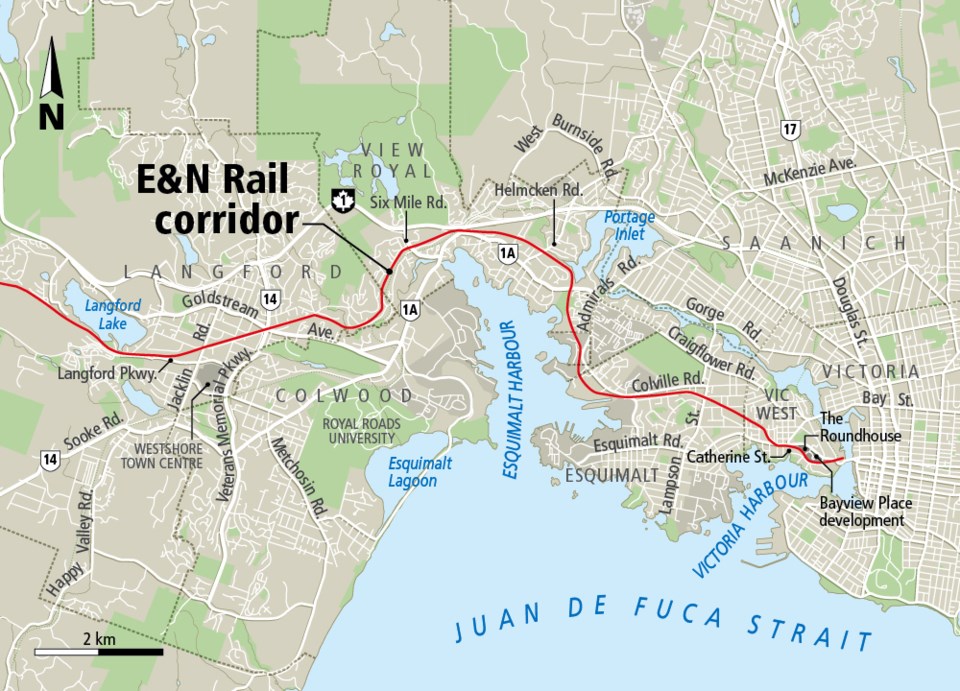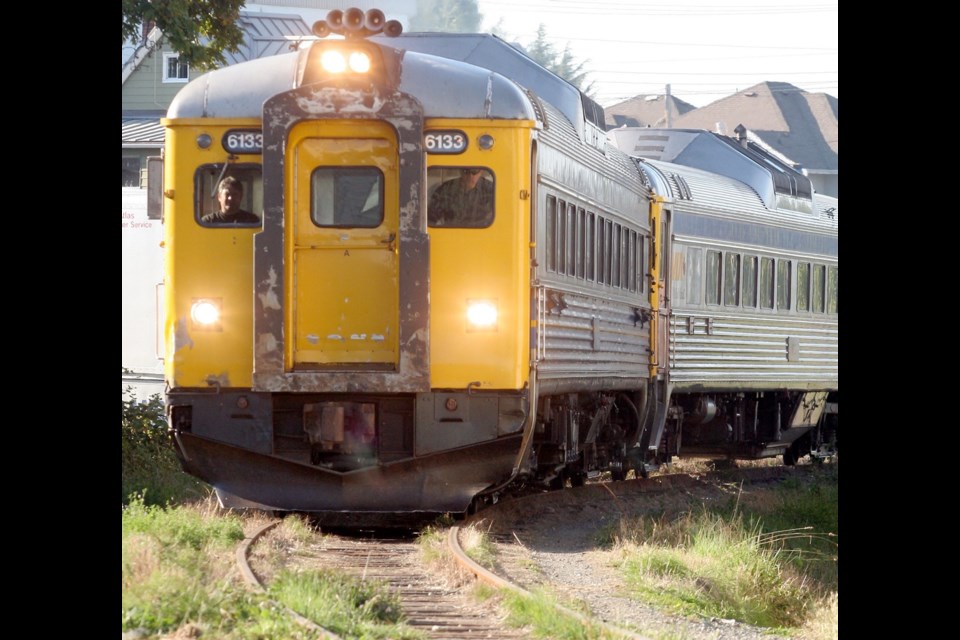Immediate action is needed to get passenger trains running on the E&N Rail line between Langford and Victoria, the region’s 13 mayors say in an appeal to Premier John Horgan for funding in the upcoming provincial budget.
“The E&N — along with the addition of rapid bus lanes on Highway 1 — will provide significant environmental benefits including a reduction in [greenhouse gases] and will relieve regional gridlock,” the 13 mayors say in open letters to the premier and to Transportation Minister Claire Trevena.
“We call on you to commit to both in this February’s budget. This region needs your leadership and we are here as mayors to support you and stand with you as you make these important investments in our region,” the letters say.
Once the rail line between Langford and Victoria is addressed, the mayors recommend a phased approach for the rest of the line on Vancouver Island “that honours the wishes of First Nations along the corridor.”
The letters note that there was overwhelming support at a December E&N stakeholder meeting for rail on the corridor “to ease traffic congestion and boost economic development.”

View Royal Mayor David Screech called the transportation investments “overdue” and said the unanimity of the 13 mayors signifies the importance of the issue.
“I think this is the first time that I can ever recall all 13 mayors signing a letter on any issue to the province, and I hope the province interprets that as how seriously we mean this,” Screech said.
“Everyone agrees there’s congestion between downtown and the West Shore and, therefore, between the West Shore and the Peninsula. So the call is not just for the train,” said Victoria Mayor Lisa Helps.
Improving transportation will bring many benefits, she said. “It’s going to reduce greenhouse gas emissions. It’s going to reduce congestion. It’s going to make the economy better. It’s going to give people more time at home with their families,” Helps said.
In a statement, Trevena said reconciliation and partnership with First Nations are key in any decision around future use of the E&N corridor.
“Before decisions are made around investing significant public dollars along the E&N corridor, an up-to-date and in-depth track and bridge assessment is necessary,” the statement says.
“This includes the cost of imperative safety work, including a seismic risk assessment and rock-fall review to ensure any passenger rail service meets current-day safety standards. This work is happening. The ministry anticipates the assessment to take six months.”
Trevena’s statement did not address bus lanes.
In their letters, the mayors noted that recent completion of bus lanes on Douglas Street has already led to decreased travel times for bus riders.
Within a week of opening, the northbound Douglas Street bus lane from Tolmie Avenue to the Burnside Road West/Interurban Road area in December, bus passengers were saving up to 10 minutes during peak travel periods.
The new 2.3-kilometre section of bus lane is part of a system that also includes a southbound Douglas Street bus lane from Tolmie to Fisgard Street. The southbound lane is to be extended to the Burnside/Interurban area this spring.
Passenger traffic on the E&N was suspended in 2011 because of concerns the track was becoming unsafe and because there was no profit on the Dayliner service, which saw a rail car travel from Victoria to Courtenay and back once a day.
The non-profit Island Corridor Foundation owns the rail line.
Langford Mayor Stew Young said the train corridor should be turned over to the province, which should negotiate agreements with First Nations about its use. “Nothing will happen on the corridor until we get a new agreement with First Nations,” he said.



